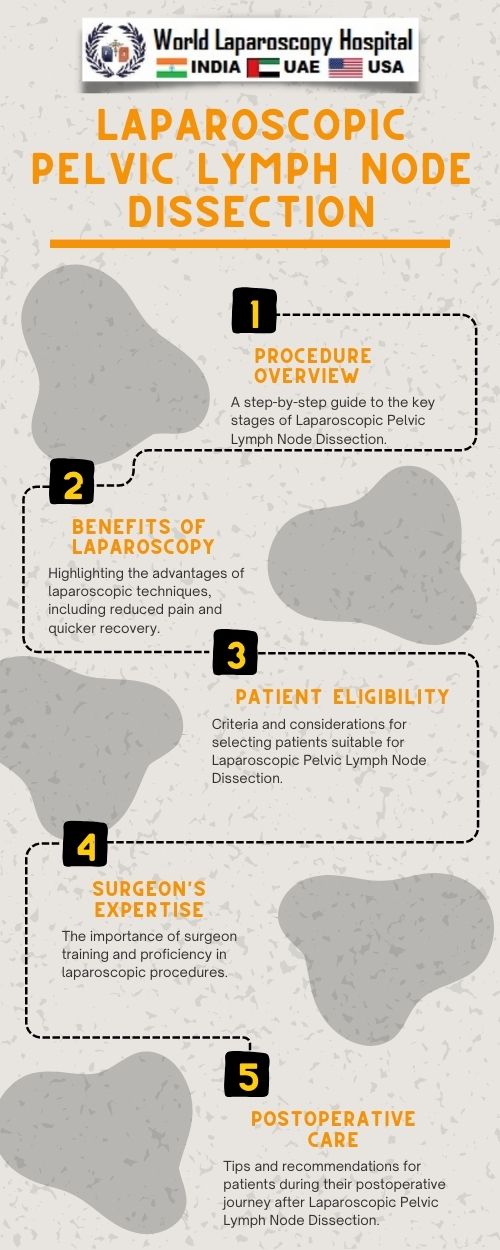Introduction
In the realm of surgical innovation, laparoscopic techniques have revolutionized the way we approach complex procedures. One such procedure that has witnessed remarkable progress in recent years is Laparoscopic Pelvic Lymph Node Dissection (LPLND). This minimally invasive approach to an essential surgical task has not only improved patient outcomes but has also challenged the surgical community to unlock its full potential. In this article, we delve into the nuances of Laparoscopic Pelvic Lymph Node Dissection, exploring the evolution of the technique, its advantages, challenges, and the mastery required to excel in this field.

The Evolution of Laparoscopic Pelvic Lymph Node Dissection
Traditionally, Pelvic Lymph Node Dissection was performed through open surgery, involving large incisions and longer recovery times. However, with the advent of laparoscopy, a revolution was born. Laparoscopic techniques offered a less invasive approach with smaller incisions, reduced postoperative pain, shorter hospital stays, and quicker recovery. These benefits prompted surgeons to explore the possibilities of Laparoscopic Pelvic Lymph Node Dissection.
Advantages of Laparoscopic Pelvic Lymph Node Dissection
1. Minimally Invasive: The hallmark advantage of laparoscopic surgery is its minimally invasive nature. In LPLND, small incisions are made through which a laparoscope and specialized instruments are inserted. This results in less tissue trauma, reduced pain, and faster healing.
2. Enhanced Visualization: Laparoscopy provides surgeons with high-definition, three-dimensional visualization of the surgical field. This exceptional clarity allows for precise identification and dissection of pelvic lymph nodes.
3. Improved Patient Outcomes: Patients undergoing Laparoscopic Pelvic Lymph Node Dissection often experience reduced postoperative pain, shorter hospital stays, and quicker return to their daily activities. It offers an improved overall surgical experience.
Challenges in Laparoscopic Pelvic Lymph Node Dissection
While Laparoscopic Pelvic Lymph Node Dissection offers numerous advantages, it also presents its own set of challenges:
1. Steep Learning Curve: Mastery in laparoscopic techniques takes time and practice. Surgeons must overcome the initial learning curve to perform the procedure efficiently.
2. Instrumentation: Laparoscopic instruments require precision and coordination. Surgeons need to become proficient in using these specialized tools effectively.
3. Patient Selection: Not all patients are suitable candidates for Laparoscopic Pelvic Lymph Node Dissection. Patient selection based on factors like body mass index and previous surgeries is crucial for success.
Mastery in Laparoscopic Pelvic Lymph Node Dissection
Becoming a master in Laparoscopic Pelvic Lymph Node Dissection requires dedication, ongoing training, and a commitment to patient care:
1. Education and Training: Surgeons must invest in continuous education and training in laparoscopic techniques. Workshops, courses, and mentorship programs can aid in skill development.
2. Practice and Experience: Proficiency in laparoscopy comes with experience. Surgeons should actively seek opportunities to perform Laparoscopic Pelvic Lymph Node Dissection under supervision until they gain confidence.
3. Team Collaboration: A skilled surgical team is essential. Laparoscopic procedures often involve a team of surgeons, nurses, and technicians working in harmony.
Conclusion:
Laparoscopic Pelvic Lymph Node Dissection has emerged as a transformative approach in the field of surgery. Its advantages in terms of patient outcomes and recovery cannot be denied. However, mastery in this technique demands unwavering dedication, training, and experience. Surgeons in Gurugram and around the world are continually working to unlock the full potential of Laparoscopic Pelvic Lymph Node Dissection, ensuring that patients receive the best care possible.
As the field of laparoscopy continues to evolve, the mastery of Laparoscopic Pelvic Lymph Node Dissection stands as a testament to the constant pursuit of excellence in surgical practice. Unlocking its potential is not just a professional achievement but a commitment to improving the lives of patients who entrust their care to the hands of skilled surgeons.